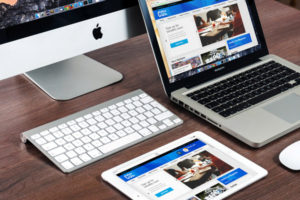 In 2014, Fishbowl Solutions engaged with Cox Enterprises to build its employee digital workplace. Prior to that engagement, Fishbowl delivered numerous employee, customer, and partner portals/intranets, but this was our first project where the word portal wasn’t being used to describe what Cox Enterprises would be building and delivering to its employees. Instead, the phrase “digital workplace” detailed how Cox’s vision for a consumer-like digital experience that promoted collaboration, sparked innovation, and helped employees get their jobs done – regardless of time, space, or device.
In 2014, Fishbowl Solutions engaged with Cox Enterprises to build its employee digital workplace. Prior to that engagement, Fishbowl delivered numerous employee, customer, and partner portals/intranets, but this was our first project where the word portal wasn’t being used to describe what Cox Enterprises would be building and delivering to its employees. Instead, the phrase “digital workplace” detailed how Cox’s vision for a consumer-like digital experience that promoted collaboration, sparked innovation, and helped employees get their jobs done – regardless of time, space, or device.
Now neither the term nor concept of a digital workplace was new in 2014. Tech vendors and analysts had been discussing such a workplace environment since around 2008, but you may remember it being called Enterprise 2.0. What stands out to me regarding Enterprise 2.0 was how much collaboration or social capabilities in the workplace became the focus. Such collaboration capabilities as instant messaging, blogs, wikis, and document sharing were thought to be the catalyst for more information sharing, which would lead to more innovation and better employee engagement. However, the place where all this collaboration was supposed to take place – the employee portal or intranet – did not offer the experience or performance that users needed to get work done. Furthermore, the technology and associated features really drove conversations and platform decisions, and not what users needed from the portal or how they wanted to work.
Contrast the above with how Cox Enterprises decided which portal platform they would use for their employee digital workplace. For them, this started with a focus on the workplace they wanted to provide to their employees. A workplace where employees could collaborate and access relevant information from one system – regardless of device. They invested time and money to learn as much about their eventual portal users (personas). Only after this was completed did they decide on the technology with the associated features that could support employee work streams and how they would use the portal.
This focus on the user was part of much larger “digital transformation” initiative the company was undertaking. This initiative really centered on making sure Cox’s 50,000 employees, which are scattered across several divisions and geographic locations, were engaged and informed. To enable this, Cox leaders wanted to provide them with similar experiences to access company, department, and personal information. After doing the persona analysis and user flow mapping, they decided that Oracle WebCenter Portal would be the system for their employee digital workplace. They based their decision on WebCenter Portal’s tight integration with WebCenter Content, which was key for their overall digital transformation initiative to consolidate as much content within one system. They also needed a system that could handle 1,500+ concurrent users, and WebCenter’s underlying architecture, including WebLogic Server and Oracle Database, exceeded their performance metrics.
I encourage you to learn more about Cox’s digital transformation initiative by attending the webinar they are partnering with Fishbowl on, which takes place on Thursday, September 14th. Come hear from Dave Longacre, one of Cox’s project managers for the digital workplace project, detail the vision, steps, and resulting benefits for Cox’s employee digital workplace. Please click on the link below to register. Also, check out our employee digital workplace page on our website for more resources.
https://fishbowlsolutions.com/about/news/webinar-cox-enterprises-built-digital-workplace-50000-employees-using-oracle-webcenter-portal/

